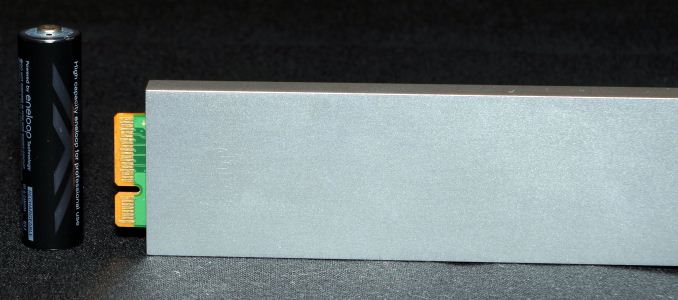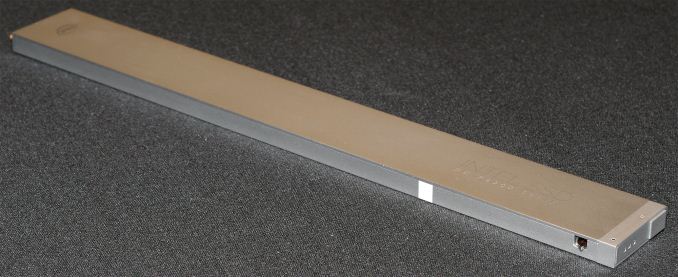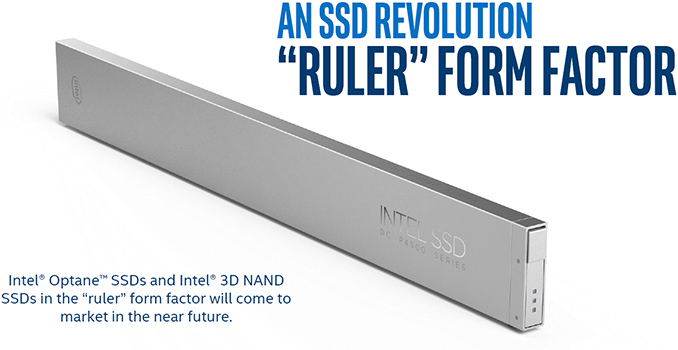OOPS! You forgot to upload swfobject.js ! You must upload this file for your form to work.
Tired of the crypto currency shop again began to sell video cards
![]()
|
xtreview is your : Video card - cpu - memory - Hard drive - power supply unit source |
|
|||
|
|
||||
 Recommended : Free unlimited image hosting with image editor
Recommended : Free unlimited image hosting with image editor
|
POSTER: computer news || TIRED OF THE CRYPTO CURRENCY SHOP AGAIN BEGAN TO SELL VIDEO CARDS |
DATE:2017-08-10 |
|
|
So historically, solid-state drives began their way with the form factors adopted for the production of hard disks. This guaranteed a simple transition from HDD to SSD in both consumer systems and servers. Much later, SSDs had their own form factors, for example, M.2. Small flash memory chips are compact and do not need to copy hard drive forms. But where compactness is not needed - in servers and in corporate storage systems - the form factor M.2 is already irrelevant. For server
racks for a long time it was necessary to create the form factor SSD with the greatest raised density of record and with optimum cooling. For this it was necessary to go beyond the form factors of hard disks and create something original.  The official press release of Intel reported that it developed a unique form factor for SSD servers. The solution was given the conventional name "ruler" (Ruler). The drive has dimensions that are compatible with a 1U shelf computer. The length is 325.35 mm, the height is 38.6 mm, and the width is 9.5 mm. The company has been supplying samples of "lines" to some customers for several months and hopes that the standard will become a general industrial one. By the way, there is a non-zero probability that in the form of a ruler graphics accelerators and computational accelerators, including FPGA arrays, can be produced. The line uses the SFF-TA-1002 "Gen-Z" connector, which is developed by the appropriate consortium, which includes AMD, ARM, Cray, Dell, HPE, Micron, Xilinx, Huawei, Samsung, SK Hynix, Broadcom and IDT.
 The SFF-TA-1002 "Gen-Z" connector supports PCI Express 3.1 x4 and x8 interface with a maximum theoretical bandwidth of 3.94 GB / s and 7.88 GB / s in both directions. Over time, 16 lines and PCI Express 4.0 and 5.0 standards can be supported. This will raise the exchange rate to an impressive 50-63 GB / s.  The drives "ruler" are designed with a mass of features that can make life easier for the maintenance personnel of storage systems. So, the LEDs on the front panel of the drives can be programmed for their tasks and immediately prompt which drives are used rarely, are faulty or work for wear. Also, the SSD "line" has additional contacts for managing and configuring the SSD and can be connected to an external power source to protect against failures.  Experienced copies of the "line" company Intel supplies in the form of drives series DC P4500. They rely on the company's 3D NAND flash memory and proprietary controller. Over time, the company plans to introduce a "ruler" on the memory of 3D XPoint. Related Products : | ||
|
|
||
|
xtreview is your : Video card - cpu - memory - Hard drive - power supply unit source |
|
|
|
|
||
|
Xtreview Support  N-Post:xxxx Xtreview Support        |
TIRED OF THE CRYPTO CURRENCY SHOP AGAIN BEGAN TO SELL VIDEO CARDS |
| Please Feel Free to write any Comment; Thanks  |
The new version of GPU-Z finally kills the belief in the miracle of Vega transformation (2017-09-08)
The motherboard manufacturer confirms the characteristics of the processors Coffee Lake (2017-09-08)
Unofficially about Intels plans to release 300-series chipset (2017-09-08)
The Japanese representation of AMD offered monetary compensation to the first buyers of Ryzen Threadripper (2017-09-08)
TSMC denies the presentation of charges from the antimonopoly authorities (2017-09-08)
Radeon RX Vega 57, 58 and 59: the wonders of transformation (2017-09-07)
ASML starts commercial delivery of EUV-scanners (2017-09-07)
The fate of Toshiba Memory can be solved to the next environment (2017-09-07)
duo GeForce GTX 1080 Ti in GPUPI 1B at frequencies of 2480-10320 MHz (2017-09-07)
Advertising Radeon RX 570 for 279 dollars AMD caused a storm of emotions (2017-09-07)
Twelve-core Core i9-7920X lost the lid in front of the photographic lens (2017-09-06)
China banned the creation of new ICO crypto-currency and ordered to return the money for the created one (2017-09-06)
AMD gave details about the history of the Ryzen Threadripper (2017-09-06)
The six-core processor Intel Coffee Lake lit up at a Chinese auction (2017-09-06)
The characteristics of the mobile chip MediaTek Helio P40 are known (2017-09-06)
By the end of the year Toshiba hopes to release a 14TB hard drive (2017-09-06)
Delivery of virtual reality seats Roto VR will begin in late October (2017-09-05)
Compact systems Intel NUC based on Coffee Lake will be released in the second quarter of 2018 (2017-09-05)
Asustek increases its share in the segment of expensive motherboards (2017-09-05)
AMD processors with Zen architecture of the second generation will raise frequencies and specific performance (2017-09-05)
![]()
To figure out your best laptops .Welcome to XTreview.com. Here u can find a complete computer hardware guide and laptop rating .More than 500 reviews of modern PC to understand the basic architecture


7600gt review
7600gt is the middle card range.
We already benchmarked this video card and found that ...

 geforce 8800gtx and 8800gts
geforce 8800gtx and 8800gts  Xtreview software download Section
Xtreview software download Section  AMD TURION 64 X2 REVIEW
AMD TURION 64 X2 REVIEW  INTEL PENTIUM D 920 , INTEL PENTIUM D 930
INTEL PENTIUM D 920 , INTEL PENTIUM D 930  6800XT REVIEW
6800XT REVIEW  computer hardware REVIEW
computer hardware REVIEW  INTEL CONROE CORE DUO 2 REVIEW VS AMD AM2
INTEL CONROE CORE DUO 2 REVIEW VS AMD AM2  INTEL PENTIUM D 805 INTEL D805
INTEL PENTIUM D 805 INTEL D805  Free desktop wallpaper
Free desktop wallpaper  online fighting game
online fighting game  Xtreview price comparison center
Xtreview price comparison center Lastest 15 Reviews


Rss Feeds
Last News
- The new version of GPU-Z finally kills the belief in the miracle of Vega transformation
- The motherboard manufacturer confirms the characteristics of the processors Coffee Lake
- We are looking for copper coolers on NVIDIA Volta computing accelerators
- Unofficially about Intels plans to release 300-series chipset
- The Japanese representation of AMD offered monetary compensation to the first buyers of Ryzen Threadripper
- This year will not be released more than 45 million motherboards
- TSMC denies the presentation of charges from the antimonopoly authorities
- Radeon RX Vega 64 at frequencies 1802-1000 MHz updated the record GPUPI 1B
- AMD itself would like to believe that mobile processors Ryzen have already been released
- AMD Vega 20 will find application in accelerating computations
- Pre-orders for new iPhone start next week
- Radeon RX Vega 57, 58 and 59: the wonders of transformation
- ASML starts commercial delivery of EUV-scanners
- The older Skylake processors with a free multiplier are removed from production
- Meizu will release Android-smartphone based on Helio P40
- AMD Bristol Ridge processors are also available in American retail
- The fate of Toshiba Memory can be solved to the next environment
- duo GeForce GTX 1080 Ti in GPUPI 1B at frequencies of 2480-10320 MHz
- New Kentsfield overclocking record up to 5204 MHz
- Lenovo released Android-smartphone K8

HALO 3 HALO 3 - Final Fight!

PREY Prey is something you don t often see anymore: a totally unigue shooter experience.

computer news computer parts review Old Forum Downloads New Forum Login Join Articles terms Hardware blog Sitemap Get Freebies


